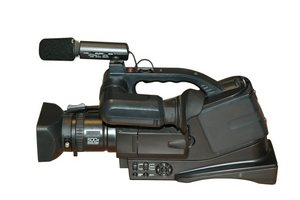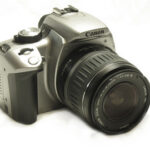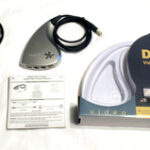With the upcoming holidays and new tech toys, you may well find yourself in need of updated device drivers – the software that enables your computer to understand its hardware and peripherals (e.g. printers, digital cameras, video cards, external CD burners).
“What? Shouldn’t I be able to just plug in my camera and expect it to work?”
Yes, you should, and it may, but there will likely come a time when you need to update a device driver: whether the original device driver is buggy, or new software is purchased that requires such an update. (Hint: Keep this article handy).
The question remains whether to update the device driver on your own or pay a person or service to do the job. Following these instructions, a number of both paid and free device driver resources are recommended.
The following explains the basics of installing device drivers and performing device drivers updates. Further, you will learn when device driver updates help and when they hurt your computer.
Device Drivers and Installation Disks
The hallmark sign of a device driver problem, or that its missing, is that the computer will not recognize the new equipment. (See the Device Manager section) If this is a new gadget and you have a device driver installation disk, the process is typically as follows:
For external USB devices: run the installation disk first, reboot the computer, and then plug in the hardware into the USB slot.
For internal hardware (e.g. video cards, wireless modems): install the hardware first and then run the installation disk containing the device driver. Then, reboot the computer.
Alternatively, one can use the Add Hardware wizard in Windows, but this may fail to work.
Otherwise, many device driver headaches are avoidable by careful attention to the product installation instructions.
Device Drivers Equipped with the Computer
Many device drivers are included with the computer’s operating system (i.e. Windows XP, Vista or Linux). Some are generic device drivers and others are brand, make and model specific. The latter is generally preferred.
Finding Device Drivers Online
For the latest device driver updates, the product manufacturer’s web site may be the best option. For instance, if you have a Kodak camera, try Kodak.com. Generally device drivers are found in sections labeled “Support” or “Downloads.”
Another option is to Google it. Search for the make and model of the device followed by the words “device driver,” and if necessary your operating system.
Example: “Kodak Z612 Device Driver Vista”
Unfortunately, not all companies provide reliable device drivers updates, but most do. A third-party resource may instead be needed.
Use reliable sources and read the associated device driver text carefully. Verify the brand, make and model match and the device driver is designed to work with your computer setup. (Don’t install a Vista update for a Windows XP machine).
Device Manager: Find, Update and Rollback Device Drivers
On Windows systems, the Device Manager provides information about your hardware and device drivers. With it, you can install a device driver, update a device driver, remove or disable it, or perform a rollback to its original state (before upgrading). Use it also to simply view the hardware recognized by your computer.
To access the Device Manager:
Click START, RUN and Type: “control sysdm.cpl” (no quotes)
or find the System icon located within the Control Panel.
The Device Manager is located under the Hardware section. Click on the Device Manager button.
Right-click on the appropriate hardware if it exists, and select Properties, then Driver.
From here you can perform the needed device driver functions. If the hardware you installed is unlisted, then the device driver is not recognized.
Close the program and follow the aforementioned device driver installation instructions. If this fails, a device driver conflict is likely. Some computer forums, as well as customer support, are dedicated to resolving some of these device driver issues. (See Resources)
Before Installing Device Driver Updates
-Consider if a device driver update is desirable.
If your computer and peripherals are running smoothly there is usually little need to update the device driver. In fact, it may be undesirable. Newer device drivers may cause serious problems. However, overall, updated device drivers promote a faster, more trouble-free computer. Before installing a device driver update:
-Create a System Restore Point on your computer.
-Acquaint yourself thoroughly with the Device Manager
-Know how to correct a faulty device driver installation
Typically device drivers updates for cameras, printers and external hard drives will go smoothly. Video card driver updates, and other internal hardware, require extra caution and knowledge. An incorrect or buggy video card driver may disable your computer.
If a problem occurs, restart the computer in Safe Mode (press F8 upon reboot) if possible, access the Device Manager and disable or “rollback” the offending device driver.
When to Search for an Updated Device Driver
Some computer errors potentially related to device driver problems include: frequently locked software programs, sluggish system performance, and the “Blue Screen of Death.” In short, as the name indicates, the screen turns blue – it also locks the computer and frequently provides an error message. A device driver problem may or may not be mentioned.
Paid and Free Device Driver Scans and Updates
A search for “device driver scan” or “device driver updates” results in both free and paid device driver services, and both high and questionable quality resources. Generally, it is not necessary to pay for a device driver update unless you simply want an automated service to perform the task.
Further, you can run a free device driver scan and Google the items that the scan recommends paid updates for. The same device drivers may be freely available on another web site. Of note, the “free” device drivers scans promote a paid product. If no updates are recommended, the product or service is not sold.
Conclusion on Device Drivers
Most novices can install device drivers for brand name products with relative ease. Device driver updates, and some hardware, require a bit more knowledge. Occasionally, a device driver update is nearly impossible to find. Free device driver forums and services can help.
Device Driver Resources
Microsoft: The first stop for Windows users. http://windowsupdate.microsoft.com/
CNET: Free device driver programs and information. http://www.cnet.com/topic/device-driver.html
TechSpot: Free forum for locating device drivers and requesting help. http://www.techspot.com/
MajorGeeks: Provides a variety of free drivers. http://www.majorgeeks.com/downloads35.html
Driver Agent: Paid service, free scan, easy to use. http://www.driveragent.com
Driver Guide: Most services require a membership, free scan available, annoying ad-sponsored sign-up, good for hard-to-find device drivers http://www.driverguide.com/








